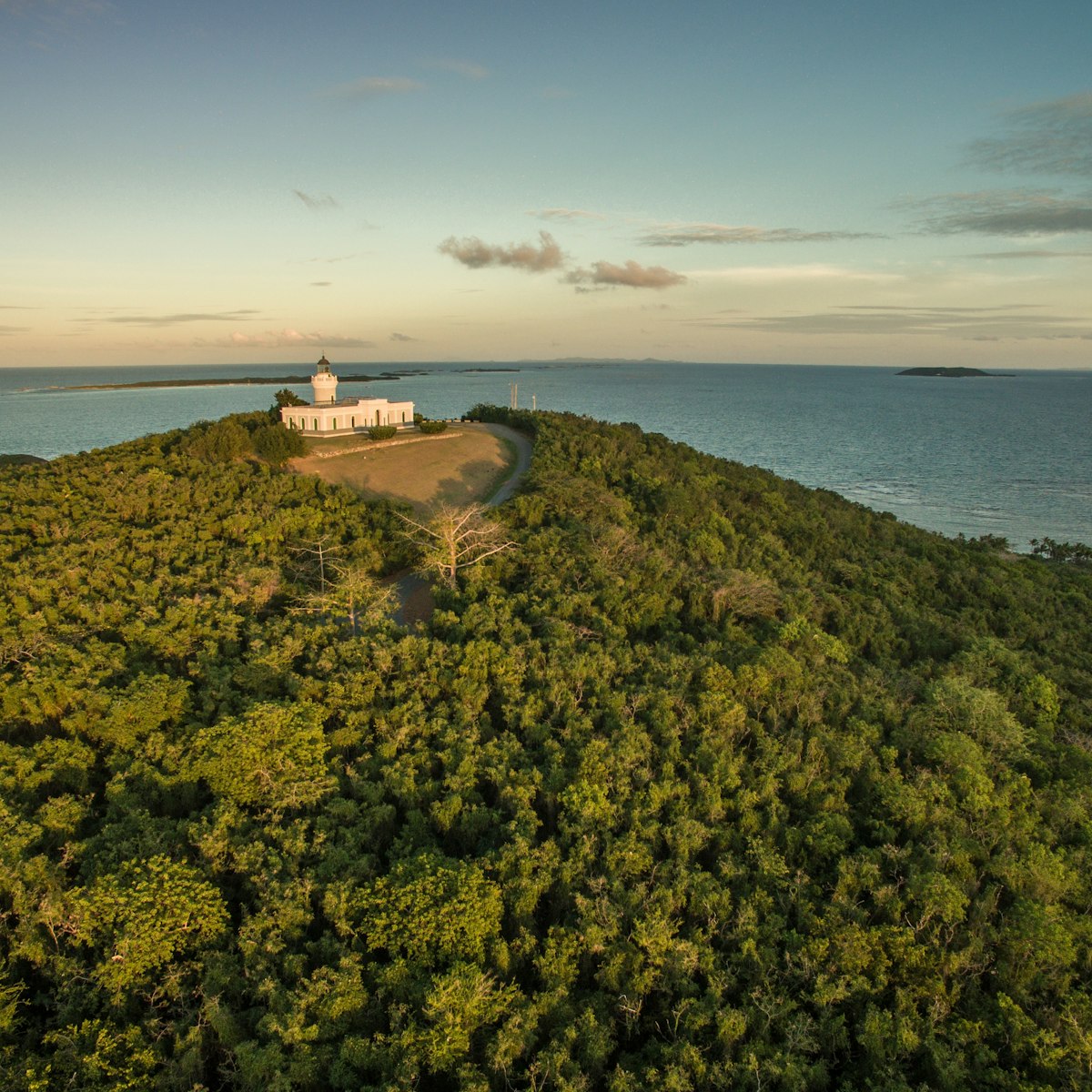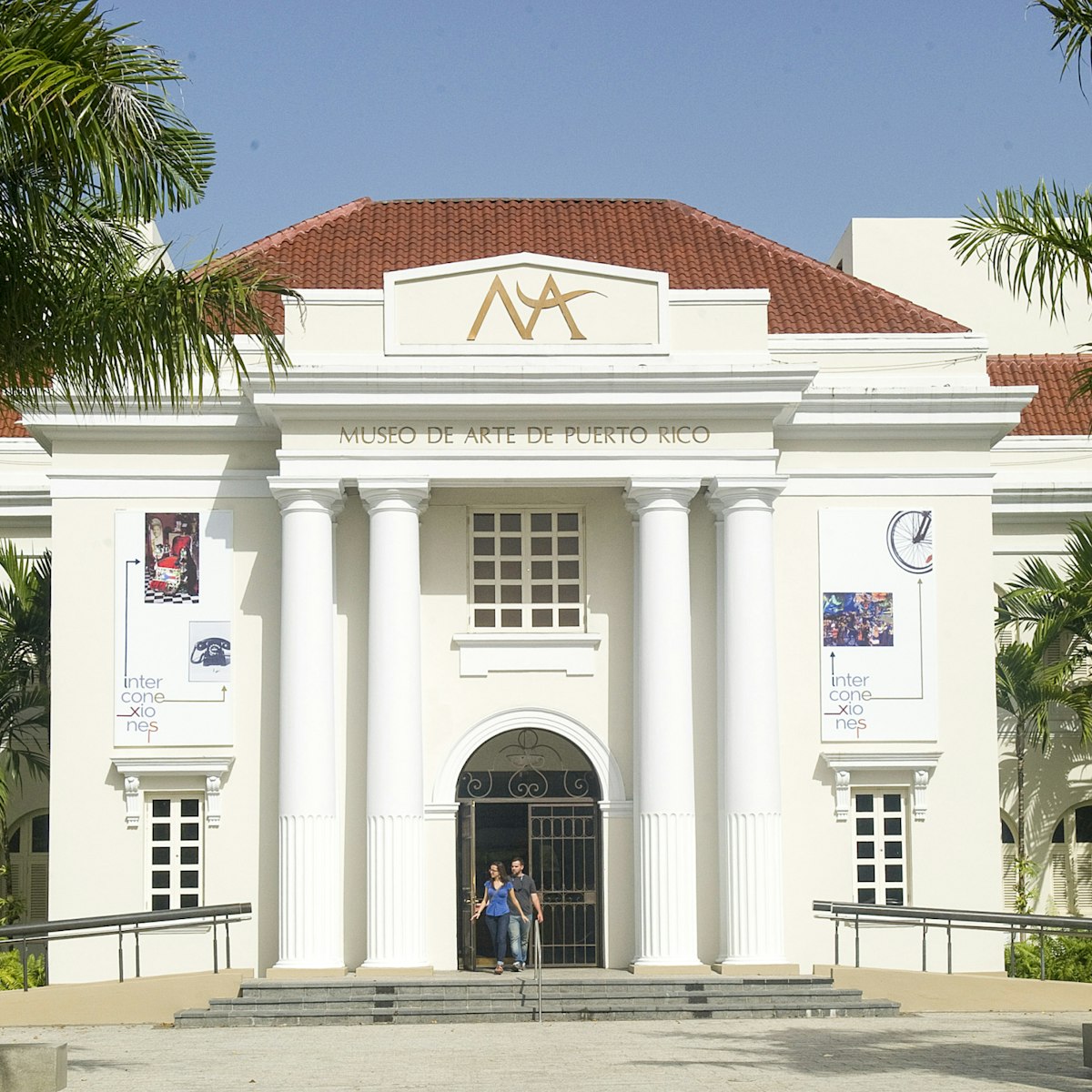El Yunque National Forest is one of Puerto Rico’s crown jewels with nearly 29,000 acres of lush, mountainous terrain scattered with waterfalls, rushing rivers, towering trees and bamboo groves, all opening up to spectacular ocean views.
The only rainforest in the US National Forest System, El Yunque (named after the Taíno god, Yúcahu) has 25 miles of trails to suit all hiking abilities. Some are short and paved, others long, steep and overgrown. Almost all gain some elevation; one of the toughest is to El Toro, around 3500ft above sea level.
El Yunque has two entrances: the northern side, 25 miles east of San Juan, receives the majority of visitors, while the southern side close to Naguabo retains a wild pristine feel.
Due to the devastation wrought by Hurricane Maria in 2017, check the website for up-to-date information on the trails’ status.
Embark on hikes (short and sweet, with information boards and tourist hoards, or long and lonely, with coquí frogs for company) through the oxygen-rich mist and gawk at Jurassic-sized ferns.
Bring a raincoat and binoculars, too; of the 26 species found here and nowhere else on Earth, you’ll want to keep a sharp eye out for the Puerto Rican parrot, one of the world's 10 most endangered birds.
How to get to El Yunque
Since there’s no public transportation to El Yunque, you will need to get here with a private vehicle or on a guided tour from San Juan or Fajardo.
Driving from San Juan, there will be signs directing you from Hwy 3 to Hwy 191. Turn south at Palmer and follow the signs to El Yunque National Forest.
Take note that some maps still show that you can traverse the forest on Hwy 191, or access El Yunque from the south via this route. However, Hwy 191 has been closed south of Km 13 for years and there are no plans to reopen it.
Some road maps also suggest that El Yunque can be approached via a network of roads along the forest's western border. Don’t try it: these roads are unmaintained tracks that often dead-end in serious jungle. Be sure to check the latest conditions of El Yunque's roads before heading out.
There's a northern entrance near Luquillo and a southern entrance near Naguabo, both off Hwy 191.
The El Portal Visitors Center reopened in 2022 after sustaining structural damages due to hurricanes Maria and Irma in 2017.
The northern side is more visited and has lots of well-marked trails and parking areas; the southern side is wilder and less developed, making for beautiful off-the-beaten-track experiences.
Make sure to secure a reservation before heading out.
Best time to go to El Yunque
El Yunque National Forest has year-round trails but the best time to visit is from mid-April to June to avoid the winter rush and the wet summer. Hurricane season – June through late November – can bring sodden conditions to El Yunque National Forest, with the possibility of trails being closed due to mudslides and flooding, so always check the trail status before you set out. But it’s called the rainforest for a reason – you can expect showers every day.
El Yunque's operating hours
El Yunque is open from 7:30am-6pm (except on Christmas). There’s no entrance fee, however some attractions inside the park require payment.
Attractions in El Yunque
There’s more to do at El Yunque then hike. Get that adrenaline pumping by soaring through the verdant canopies on a zipline. Carabalí Rainforest Park offers horseback riding, go-karts, ATV tours and hayrides.
Guided Tours to El Yunque
There are many San Juan and Fajardo-based tour operators offering day trips to El Yunque. All will transport you to and from the park, highlight the main sights and provide you with a mine of interesting information about its flora and fauna.
Camping in El Yunque
There are no developed campgrounds or designated camping areas in El Yunque.
Primitive camping is allowed along most roads and trails except closed areas, but at the time of research, camping was off-limits until 2021. Check the El Yunque National Forest website for up-to-date information.
Normally, tents must be located at least 30ft away from any trail or body of water and at least 50ft from roads and developed picnic sites. Most importantly, campers need a free permit that must be obtained at least 14 days before their visit.
Nearby hotels
There are several boutique accommodations like Casa Flamboyant, Dos Aguas and the Rainforest Inn on the fringes of El Yunque National Forest, which still feels very wild. Proximity to the rainforest means you’ll be lulled to sleep by the sound of chirruping coqui frogs and wake to tropical birdsong.
Lodging to the north means easy access to Luquillo's beaches – the south is more isolated but both areas are within reach of Fajardo and the Bio Bay.
Nearby restaurants
Palmer, the colorful strip where Hwy 191 heads south from Hwy 3 toward El Yunque, has some good eating options like Degree 18 Juice Bar, Lluvia Deli Bar and Mi Vida Café & Burger.
Inside the park, there are a few cheap-and-cheerful roadside stands and the visitors center will have a cafe.










